Newsletter of the IEEE Power Electronics
Society
Volume 11, No. 2
April 1999
In this Issue
- The President's Message
- Report from IEEE Division II Director Barry Brusso
- Web Renewal Report
- New Membership Development
- Conference Closings
- Virtual Reading Room
- Student Branches
- IEEE-SANEWS - First Issue from IEEE Standards Association
- APEC '99 Report
- PELS Standards Committee Report
- Four Societies Meet to Plan Cooperation
- Tricks of the Trade: Guesstimating Inductance of Wire Loops
- Changes in PELS Constitution
- PELS Officers for 1999
- LA Council Chapter News
- Engineers Can Prepare for P.E. Exam with Two IEEE New Video Courses
- Meetings of Interest to PELS Members
by Philip Krein
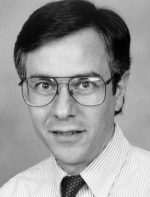
Many people have asked to learn more about the activities of the Power Electronics Society, and want to get the best value from their membership. The most familiar services are publicity and publications. Through this newsletter and mailings of conference programs, you have been receiving advance notice of a wide range of technical conferences on power electronics and related topics. You have been receiving the highly-respected IEEE Transactions on Power Electronics. But there is much more to the Society. Our main activities are to encourage open exchange of technical information, to serve the entire engineering and scientific community through top-quality publications, and to help support the continuing education and professional development needs of our members. All members have access to electronic versions of our Transactions papers through the IEEE OPeRA system at http://opera.ieee.org. Members are invited to join or to help form Technical Committees and local Chapters. Our committees organize workshops in specific subareas, such as power electronics packaging, automotive power electronics, and computer applications. Many committees are also active in standards development. Society members perform important professional services such as peer reviewing and conference organization. We work to encourage and shepherd new book proposals to the IEEE Press. We work to recognize the technical contributions of members through several different awards.
All of these activities are organized and conducted by dedicated volunteers within the Society. Each conference and workshop has a committee that sets the program and operates the meeting. Each paper published in the Transactions has been reviewed by a group of experts. Each Chapter meeting is arranged and conducted by a local group. Each committee has come about because a group with common interests has started it. Each IEEE Standard has been prepared by a dedicated group which has come together to meet a need. I encourage you to consider involvement as a Society volunteer. Paper reviews, whether for the Transaction or for conferences, require only a few hours per year from each person. Chapter activities can help you find others nearby with common interests or engineering challenges. Workshop or conference management is more demanding, but the rewards are lifelong colleagues and friends. If you see something you think should be changed, or if you can think of good new services or activities, don't be shy. The Society is "us," not "them," and we would be grateful for your insights and efforts. As a volunteer, you will be asked only to help as you want to. As a reviewer, you can decide your own work load. Please contact me directly (p.krein@ieee.org), or our lone professional administrator, Bob Myers (bob.myers@ieee.org) if you wish to explore the possibilities. Let us know if you have a particular topic or task in mind.
As I write this, we have just concluded a highly successful Applied Power Electronics Conference. If you were able to attend, you know about the extensive technical program, the valuable exhibits, and the many Professional Education Seminars on everything from power electronics basics to the latest in advanced magnetic devices. The meeting was directed by a group of about twelve hard-working volunteers, with the help of hundreds of authors and reviewers. There was good consensus that APEC has been true to its "applied" mission; nevertheless the Steering Committee is determined to enhance industry participation and value. If you were not able to join us, look for an upcoming conference or workshop in your vicinity, or ask whether a local chapter exists. Each year, we add to an international list of meetings sponsored or cosponsored by the Society.
Chapters and other IEEE groups &emdash; anywhere in the world &emdash; can request one of our Distinguished Lecturers, who can visit and present a technical talk. And if you have interests in setting up local or regional workshops or meetings, any of the officers or committee chairs would be glad to help. This is your society, and those of us who have chosen to volunteer want to make it as valuable as possible to each and every member.
- Philip Krein
- PELS President
- University of Illinois
- Dept. of Elect. and Comp. Engrg.
- 1406 W. Green St.
- Urbana, IL 61801 USA
- TEL: +1-217-333-4732
- FAX: +1-217-333-1162
- e-mail: p.krein@ieee.org
Report from IEEE Division II Director Barry Brusso
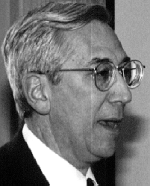
Here are the highlights of the February 1999 IEEE Board of Directors meeting held in Hilton Head, S.C.
- 1998 Activities: Executive Director Dan Senese reported on the Institute's activities in 1998, which he described as a "very good year." IEEE membership is almost 335,000, the highest ever. Society memberships are up more than six percent over 1997; the five fastest-growing IEEE societies are Communications, Solid States Circuits, Electron Devices, Microwave Theory, and Computer. Dan reported strong growth in new products and services, most of them Web-based. These include on-line availability of IEEE Standards and the IEEE Computer Society; digital libraries and digital subscriptions; continued customer growth for the IEEE/IEE Electronic Library (IEL); and the recent introduction of the IEEE's revitalized Web site. The IEEE ended the year with a surplus of almost $8 million.
- New Ad Hoc Committees: The Board of Directors received status reports on three newly-formed ad hoc committees that will focus on strategic areas of activity. Region 7 Director David Kemp chairs the Branding Committee; Division 10 Director Janie Fouke heads the Streamlining Decision Making Committee; and, IEEE Treasurer David Conner leads the New Financial Model Committee. Each committee's recommendations will be considered later this year.
- Proposed New Bylaws: Following discussion concerning proposed Bylaw changes about multiple candidacy and elections, it was decided that IEEE President Kenneth Laker will appoint an ad hoc committee to work with Secretary Maurice Papo and other volunteer leaders to develop proposed new Bylaws. These proposed Bylaws will be circulated to the six major IEEE Boards before being resubmitted to the IEEE Board of Directors.
- Voting Process: The Board approved a proposal to review the approval voting process. An ad hoc committee will review the current voting process and, at the 2 May meeting of the IEEE Executive Committee, will provide a recommendation on the process to be used in 2000.
- Annual Election: For the 1999 IEEE elections, all members will be provided with a postage-paid return envelope for the annual election ballot. Almost 11,000 non-U.S. ballots were returned in 1998.
- Millennium Events: President-Elect Bruce Eisenstein will spearhead a special Millennium effort aimed at creating internal and external awareness of the IEEE and technology. The projects approved by the Board of Directors include creating IEEE Millennium Medals to be presented at a variety of events throughout the year; a special event at the June 2000 Board series in Vancouver, B.C., honoring the 30 living past presidents; special recognition of the approximately 25 living past recipients of the IEEE Medal of Honor; and a video oral history with materials gathered throughout the year.
- Recognition: The Board of Directors recognized Joseph Bordogna, IEEE Past President, for his "visionary leadership."
- Resolution: The Board also reaffirmed the IEEE Computer
Society's resolution in memory of Michael C. Mulder, who died in
January of this year.
- Barry C. Brusso
- IEEE Division II Director
- S&C Electric Company
- 6601 Ridge Blvd.
- Chicago, IL 60626-3997 USA
- TEL: +1-773-338-1000
- FAX: +1-773-338-1957
- e-mail: bbrusso@sandc.com
The Web Renewal Pilot was offered in response to member requests for more convenient and efficient ways of conducting business with the IEEE. We are pleased to report that the web renewal pilot was a success. Here are some of the key highlights of this program:
- On 12 October 1998, the Web Renewal Pilot opened to Region 3 (Southeastern United States) and Region 8 (Europe, Africa and the Middle East).
- On 1 December 1998 the Web Renewal Pilot was opened to all IEEE Members and Society Affiliates, excluding Life Members. As of month end February 1999, over 32,000 IEEE Member and Society Affiliates have renewed via the web, over 5,400 have updated their contact information and over 66,000 have registered for a Web Account. In accordance with the By Laws, the 1999 membership renewal period for members in Regions 1-7 closed the end of month February. As a result the web renewal pilot also closed to members in these areas. Members and Society Affiliates outside the United States and Canada will continue to have access to the Web Renewal Pilot until 30 April 1999. The Web Development Team is evaluating the results of the Pilot Program and identifying areas where we can make enhancements for the year 2000 Annual Membership Renewal.
Members wishing to reinstate their IEEE membership or society affiliate membership for 1999 are invited to contact Member Services at 1-800-678-4333 (US), +1-732-981-0060 (Worldwide) or by e-mail: at member-services@ieee.org. If you have questions regarding the termination of the Web Renewal Service for Regions 1-7 contact Marianne Schmidt, IEEE Member Services, TEL: +1-732-562-5546; FAX: +1-732-562-6380; e-mail: m.schmidt@ieee.org.
The IEEE Membership Development Committee has established its 1999 membership goal at 349,000, up from the 1998 goal of 330,000. January growth continues upward spurred on by new member Web applications.
It appears that 1999 will be an even more successful year than 1998 for Web-based new member applications, which accounted for 54 percent of higher-grade membership applications received last year. In January, the IEEE received 1,762 new higher-grade member applications, 64 percent via the Web. While higher-grade applications in January are up 11 percent compared to the same period in 1998, Web applications are up 33 percent. IEEE membership for January totaled 339,745 for an increase of 5.2 percent or 16,772 members over January 1998. Society memberships also grew to 291,285, a 6.2 percent increase over January 1998.
For more information, contact Jill Levy, IEEE Regional Activities, TEL: +1-732-562-5514; FAX: +1-732-981-0225; e-mail: j.levy@ieee.org. Half-Year Dues: Dues for new members who join the IEEE or its societies between Monday, I March through Sunday, 15 Aug, will be half the annual rate.
As approved at the November meeting of the IEEE Technical Activities Board, Societies that do not close their conference financials in a timely manner and in accordance with IEEE policy will be automatically charged a fixed dollar amount for each open conference. The charge-back fees are as follows: Each conference not closed by month 12; in month 13 the Sponsoring entity will be charged $350. Each conference not closed by month 18; in month 19 the Sponsoring entity will be charged $600. Each conference not closed by month 24; in month 25 the Sponsoring entity will be charged $750.
An additional charge of $750. will be charged each quarter that a conference is not closed. Charges will be in effect I January 1999, but will be forgiven through 31 March 1999. So please, let's close these conferences and put more money in your account.
For additional information, contact Mary Ann DeWald, IEEE Technical Activities, TEL: +1-732-562-383; FAX: +1-732-981-1769; e-mail: m.dewald@ieee.org.
The IEEE Educational Activities Department has released its Online Education Reading Room at http://www.ieee.org/eab. Once inside the virtual room, viewers can click on any book in the best-selling IEEE Selected Readings series or Engineers' Guides To Business Series, and "flip through" the full text of its pages. Titles up for browsing include Cellular Radio and Personal Communications, Smart Antennas, Recent Developments in Power Electronics, Marketing for Engineers, Working in a Global Environment, and Writing For Career Growth. The site features:
- Keyword, title, and author search options.
- Full table-of-contents displays for each title.
- Navigation tools that enable viewers to move from page to page and section to section, and to zoom in for a closer look at diagrams and formulas.
- Online ordering options.
For more information about the reading room contact Alan Trembly, IEEE Educational Activities, TEL: +1-732-562-5488; FAX: +1-732-981-1686; e-mail: a.trembly@ieee.org.
The IEEE Student Branches have hit a milestone. One hundred Branches have registered for the online student-application program, 15 in February alone.
Student Branches are finding the online application to be a great tool for recruiting new members. Since last September, more than 2,400 students have joined the IEEE online.
For more information, contact Laura Durrett, IEEE Regional Activities, TEL: +1-732-562-5523; FAX: +1-732-463-3657; e-mail: l.durrett@ieee.org.
IEEE-SANEWS
First Issue from IEEE Standards Association
The IEEE Standards Association recently sent out its first edition of IEEE-SANEWS, a fast-paced, interactive e-mail "news wire" for IEEE Standards Association members. It provides up-to-the-minute news briefs on policies, programs and products, meeting agenda and minutes postings, as well as notification of the need for feedback from our members. IEEE-SANEWS will be sent out immediately following the IEEE Standards Association Standards Board meetings and the IEEE Standards Association Board of Governors meetings, as well as other times when we need to share information or need member feedback.
For more information, contact Karen McCabe, IEEE Standards, TEL: +1-732-562-3824; FAX: +1-732-981-1571; e-mail: k.mccabe@ieee.org.
by Larry Gilbert
APEC Publicity Chair
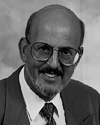
A record number of papers (187 of 192 accepted papers) were presented in 26 sessions divided up into five tracks starting on Tuesday morning at APEC '99. Topics ranged from marketing to modeling and simulation, passive and active components, inverters and converters, to single- and three-phase AC-DC power supplies.
For the eighth consecutive year booth space in the exposition hall was sold out. This year's exposition contained 119 booths (another APEC record). At the request of the Trade Commission of Denmark, the Conference Committee agreed to permit Denmark to have its own Pavilion within the APEC Exposition. More than 30 Danish business executives, including William Helmbaek, Project Manager, Danish Agency for Trade; Allan Haugsted, Ministry of Business and Industry; and Harlan Crow, CEO of Crow Holdings (and honorary Council, Denmark) attended the Conference to promote international cooperation with Danish companies.
The exhibitors provided attendees with free access to a broad range of their newest components, power supplies and design tools and had experts on hand for problem solving or general advice. As part of the APEC tradition, all conference attendees had an opportunity to attend ten one-hour exhibitor application-oriented seminars on Tuesday afternoon. Topics ranged from instrumentation and software to the latest magnetic and semiconductor devices. The Danish Pavilion provided an overview of products designed by their participant companies. Looking toward next year, before the day for signing up for APEC '00 was over, all 104 booths for were reserved with at least four firms on a priority wait list.
Another annual APEC highlight, the Micro Mouse contest, was very popular again this year. A field of thirteen mice, including nine from foreign teams, competed in this year's 13th Annual APEC contest. An audience in excess of 150 people watched as Kwa Gwang, designed by Roh Chang Hyun of Korea "squeaked" by CUQEE III, the winner of last year's APEC competition. Kwa Gwang (which means "sound of lighting" in Korean), is a stepper-motor-driven mouse utilizing an AMD 188 ES processor.
The planning for the 14th annual Applied Power Electronics Conference and Exposition started out with a huge challenge. At the last minute, the Dallas Hyatt Regency Hotel, our original site, could not guarantee that their renovation would be completed prior to the Conference week. The Conference committee then scrambled to locate suitable replacement facilities at the new Adam's Mark Hotel Dallas, Texas' biggest hotel. When you consider that our peak overnight lodging exceeded 700 rooms, and the hotel has only 1825 guest rooms, and was supporting three other Conferences, you can gain a better appreciation for the challenge that we confronted and overcame.
This year's Conference and Exposition was attended by more than 1700 attendees from over two dozen nations. Over 1000 of these individuals paid to attend the Professional Education Seminars, Technical Sessions, or both, setting new records in all three categories. The records established this year reflect the continuing strong support of the APEC sponsors&emdash;the IEEE Power Electronics and Industry Applications Societies (PELS and IAS), and the Power Sources Manufacturers Association (PSMA)&emdash;and the dedication of more than 200 volunteer representatives of the Conference and Program Committees.
The Conference opened on Sunday morning with five of the fifteen half-day Professional Education Seminars being presented by seasoned industry and academia professionals. Once again the topics were selected to appeal to the widest possible cross-section of APEC attendees. This year's seminar topics included power electronics for the nonspecialist; electronic environments; high-efficiency rectification techniques; selection and application of adjustable speed AC drives; packaging; converter design using power semiconductors; EMI avoidance; cross-regulation mechanisms; DSP motor drive controls; high-speed MOSFET gate drive techniques; computer aided algebra analysis and design; passive lossless snubbers; planar magnetic design; vector-controlled induction motor drives; and patents, prior art searching, and intellectual property.
With 657 paid attendees, APEC's technical registration surpassed the 1998 record set for this segment of the Conference. This total does not include booth staff who were also granted access to the technical sessions.
Prior to opening the Plenary Session, PELS President Philip Krein, IAS President Ira Pitel and PSMA Chairman Ed Sidor presented awards to General Chair Dong Tan, Program Chair Bob White and Finance Chair Herman W. "Butch" Hill, Jr. for their contributions to the APEC Conference.
Dr. Raymond F. Askew, Special Advisor to the International Space Station, gave a keynote address entitled "Keeping the International Space Station up to Date Technologically." Other plenary session presentations included the evolution of power electronics; power conversion; the prosperity machine; the semiconductor road map; the current status of power electronics packaging for power supplies; building compliant elements for servers; and AC drives, Y2K and beyond.
Tuesday evening's rap sessions gave the attendees and exhibitors an opportunity to challenge and question the panelists on four relevant issues ranging from "Profit margins" to "Where is power electronics technology going and who will take us there" to the very first APEC call-in radio show (except it's in person)' to "Is APEC serving the needs of its constituents and living up to its name?" As a follow-up to this last rap session, a straw poll taken the next day indicated that roughly 75-80 % believe that our papers are both "practical and applied."
On Wednesday evening upwards of 500 paid attendees were taken on a "Fantasy train trip through Texas" buffet. In addition to a wide selection of sumptuous food and desserts, attendees had an opportunity to have their photos taken on a live bull or could participate in an old western fast draw competition as a gunslinger (using blanks of course). Live music and western dancing capped off this memorable evening.
In his greetings letter to APEC '99, Texas Governor George W. Bush clearly recognized what we are all about when he stated that "your annual Conference offers an important forum for free exchange of technology information between engineers, academics and manufacturing professionals throughout the world. As a national technical professional society, your knowledge and skills in developing industrial, commercial, and military electronic systems have the potential to enhance the quality of life for millions of people. I commend you for your commitment to your profession and for encouraging students and young professionals by providing mentors and educational seminars."
Looking ahead, APEC '00 will be held Feb. 6-10, 2000 at the Fairmont Hotel in New Orleans, Louisiana, USA. APEC '01 will return to the Disneyland Hotel in Anaheim, California, USA. Anyone interested in submitting a technical session proposal of "practical" importance in any area of power electronics should submit a 50-word abstract and a 3-5 page digest (via mail ONLY) to APEC '00, 2000 L Street NW, Suite 710, Washington, D.C. 20036 USA. The deadline for submission of abstracts and digests is July 16, 1999. We are also seeking half-day professional education seminar proposals. For additional information on any aspect of APEC please refer to our web site at http://www.APEC-conf.org or contact our conference management at TEL: +1-202-973-8664, FAX: +1-202-331-0111 or via e-mail: APEC@courtesyassoc.com
- Larry Gilbert
- TEL: +1-949-581-8688
- FAX: +1-949-581-8688
- e-mail: LGPwr@aol.com
Note: Additional photos of APEC '99 will be added to this report on our web site.
Photos from APEC '99 in Dallas
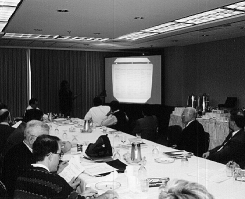
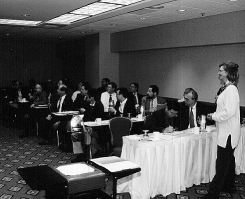
Left, the Administrative Committee of the Power Electronics Society had its spring meeting at the beginning of APEC '99. Right, Janie Fouke moderated an Intersociety (IES, IAS, PES,PELS) Cooperation Meeting at APEC.
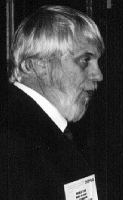
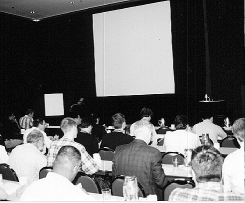
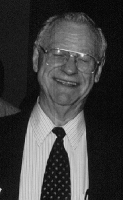
Left: Plenary session keynote speaker Raymond Askew, Special Advisor to the International Space Station
Center: Plenary session. Right: Tom Wilson, Sr., spoke on the evolution of power electronics.
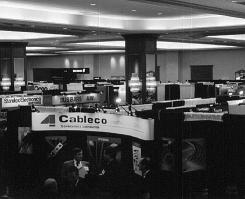
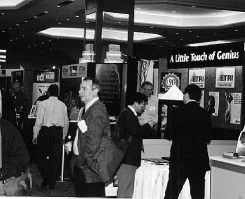
Two views of the APEC Exposition area of 119 booths plus the Danish Pavilion
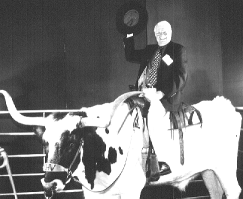
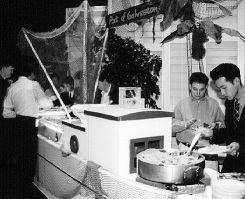
Left: Newsletter Editor Harry Owen demonstrates how to handle the bull. Right: Galveston, Amarillo and San Antonio specialty foods highlighted the Texas buffet.
PELS Standards Committee Report
The IEEE P1515 Working Group is developing a Recommended Practice for Electronic Power Distribution Subsystems: Parameters, Definitions, Test Methods, and Test Conditions. The working group is jointly sponsored by the IEEE Power Electronics Society and Department of Defense's Joint Task Force on Open Systems. The purpose of this recommended practice is to allow manufacturers and users to utilize the same set of terminology that enables systems developers to acquire cost- and time-effective electronic power subsystems.
The working group was established in 1997 by the Standards Committee of PELS. The working group now has more than 30 active participants and over 200 people on the mailing list. We have identified 106 parameters that are commonly used in industry and hence need to be defined. Among them, 93 are being developed. There have been more than three working versions of the draft that were written by the working group. A final draft is being written in compliance with IEEE standards.
In the past year, the working group on P1515 held regular meetings to discuss the draft and to resolve issues. We had respective meetings at APEC '98 in February, NAECON in July, INTELEC in October, and DASC (Digital Avionics Systems Conference) in November.
We have scheduled a meeting at APEC '99 in March of 1999 to work on the final draft of P1515. This finalized version is then to be submitted for balloting process. The balloting group is in the process of being formed with the assistanceof IEEE Standards Board staff and the working group chairman, Dr. F. Dong Tan. We are targeting to have the draft go through the entire approval process by the end of 1999.
- Report submitted by Dong Tan
- PELS Member, IEEE P1515 Working Group
- e-mail: Dong.Tan@trw.com
Four Societies Meet to Plan Cooperation
Contributed by Bob Lorenz, IAS Secretary
Representatives of four IEEE Societies, the Industrial Electronics Society (IES), the Power Engineering Society (PES), the Power Electronics Society (PELS), and the Industry Applications Society (IAS) met Monday, March 15, 1999 for an Intersociety Cooperation Meeting. The meeting was held at the Adam's Mark Hotel in Dallas, Texas, site of the 1999 Applied Power Electronics Conference (APEC). The meeting, which included a breakfast and luncheon, was hosted by by Jim Hung, President of IES. The meeting was moderated by Janie Fouke, Division 10 Director. Here is a brief informal summary of the activities of the cooperation meeting transcribed from notes taken by Bob Lorenz:
- A introduction to the IEEE History Center at Rutgers University was presented by Michael Geselowitz. This was followed by a presentation by Janie Fouke on a book project entitled "Engineering Tomorrow." This project involves a large number of engineers and others who try to imagine what the future will bring to engineering. Delivery of the book is scheduled for January 1, 2000 at a cost of $59.95.
- Jim Hung, IES President, provided a historical perspective for his society. The first IECON was held in 1975; in 1986 Fumio Harashima became the first international President; membership is now at 4,858 with one-half outside of USA; IES Transactions Editor Joachim Holtz (Germany) has expanded power electronics to 70% of their Transactions.
- Discussion of a possible joint publication of a special issue on power quality. Perhaps a special issue of the IEEE Proceedings. Maximum circulation amongst members is desired, i.e., not IEEE Proceedings via its normal, limited distribution. Action: Form an Editorial Board with one member from each Society (Jerry Hudgins, Tom Jahns, Hiro Haneda, Leo Grigsby-temp, possibly Rik DeDoncker representing EPE ?). A plan is to be developed identifying the key metrics, schedule, etc. for report at next Intersociety Cooperation Meeting.
- Report on the development of an Operating Agreement on a joint International Electric Machine and Drive Conference by Philip Krein. Action: A draft Operating Agreement was amended to include IES and was approved by vote of the group. Future of the conference, co-location of conference on a permanent basis needs to be discussed, perhaps at next Intersociety Cooperation Meeting.
- Discussion of another name for this intersociety cooperation group. "Power and Electronics Systems Group" was suggested as a name. The strong consensus of those present was that no change in name is needed for the group.
- Presentation on a Joint Distinguished Lecture Program was made by Barry Brusso. There is information on the program on the Internet at http://info.distlec.ieee.org and info.distlec.hbk@ieee.org. PELS, IAS, IES, and PES have different policies for funding, organization, and coordination Action : Development of a common plan (perhaps a common Distinguished Lecturer program) with one member from each Society. Kevin Peterson, Jaime Arau, Ben Mehraban, Hiro Haneda are to report at next meeting.
- Discussion of a possible joint publication of a special issue on "Reliability" and "Distributed Generation" in 2000. These topics were proposed as follow-up issues after the first joint issue on power quality discussed above.
- Discussion of cross publications such as magazines and transactions. Should the societies bundle newsletters, selected articles, and magazines? Should membership advertisements be put in each other's journals? How to have Transactions access and topical cross linking? Should there be cross publications of prize papers? How to promote conference CDROMs and records at sister conferences. The IEEE Bookbroker program is not involved with conference CDROMs. This program currently handles hardcopy conference records Action: Bob Myers will organize this interconference CDROM sales effort.
- Discussion of membership application to other societies. A proposal of joint membership in all four societies, with a cost reduction. Preparation of membership could be facilitated via cross-CDROM sales.
- Discussion of web page advertising. Hotlinks to advertisers on our webpage. Test advertising method for future on-line magazines. Each Society will have the same advertising page. A Webpage organizational manual is to be developed by IAS. Review this status at next meeting of Intersociety Cooperation Meeting. Action: Janie Fouke will investigate the hotlink protocol for Society website to advertisers.
- Sharing services such as advertisement, publication, meeting arrangements. On outside services, could the four societies share an executive director. PES currently has a seven-person staff with about $700k per year cost. The benefits achieved allow them to pay for themselves.
- Conference publication sharing. The Bookbroker program handles conference publications now - no action needed.
- Schedule for next meeting: IAS will host and sponsor during the IAS Annual Meeting, in Phoenix, October 3-7, 1999. IAS will set exact date and apprise all participants. IEEE staffer Mary Ward Callum will be invited to discuss IEEE staff services, with specific examples of staff models in use and evaluation of their effectiveness. APEC 2000 was tentatively selected for the following meeting.
Tricks of the Trade: Guesstimating Inductance of Wire Loops
Contributed by Marc Thompson, System Design Consultant e-mail: marctt@aol.com
Parasitic inductance can drastically affect the operation of high-speed power electronics circuits. For instance, in MOSFET switching the gate and source inductance can lower the switching speed and increase switching losses. High gate inductance can cause ringing in the gate circuit which exceeds the maximum gate-source voltage specification. Drain inductance can overstress the MOSFET due to induced voltage spikes. In amplifier circuits, parasitic inductance can result in bandwidth reduction and/or oscillation. Therefore, a method for estimating these various inductances is a valuable tool.
Guesstimating the inductance of a length of wire and its return path, or of a wire loop can be done by applying a useful rule-of-thumb. This note provides a brief theoretical background in order to get order-of-magnitude estimates of wiring inductance, and points the user to several references that can be used if more accurate results are needed. The bottom line is that a wire loop has approximately 0.5-1 microhenries of inductance per meter of length, depending on the wire-wire spacing, wire diameter, shape of the loop, etc. For wire spacing large compared to the wire diameter, the inductance of the loop is a weak function of wire diameter (which makes physical sense, if you think about it).
For instance, a circular loop of wire with loop radius a and wire radius R has the approximate inductance [Wheeler]:
L0= m0a (ln (8a/R) - 2) in H
Using this formula, the inductance of a 1 meter circumference loop of 14-gauge wire is 1.07 mH; for 16-gauge wire it is 1.12 mH; and for 18-gauge wire it's 1.16 mH. Note the weak dependence of inductance on wire diameter. This is due to the natural log in the expression. So our guesstimate of 0.5-1 mH per meter of length is a pretty good starting point. A crude approximation to the Wheeler formula for circular loops is [Lee, p. 56]
L0= m0p a in H
which predicts an inductance of 0.63 mH for a 1-meter circumference wire loop.
For two parallel wires, spaced d meters apart, each wire with radius R and with line length l meters the inductance of the loop is [Wheeler]:
L0= (m0l / p) ln(d/R-1) in H
For l = 0.5 meter and a wire-to-wire spacing d =1 cm, results are L0= 0.485 mH for 14 gauge; L0= 0.53 mH for 16 gauge and L0= 0.58 mH for 18 gauge. Therefore, for the parallel-wire line with closely-spaced conductors, the inductance is approximately 0.5 mH per meter of total wire length.
We can hone the guesstimate further by applying a little physical reasoning. For the parallel-wire case with close wire-to-wire spacing, the close magnetic coupling between the wires reduces the inductance of the loop; (this is why twisted-pairs have lower inductance than parallel wires). So, for wires that are close together (i.e. our parallel line case, 0.5 meter long with total wire length 1 meters) the inductance will be approximately 0.5 mH/meter or less. For "fat" loops, there is more area enclosed by the loop and the inductance is higher.
An excellent reference (which, unfortunately is now out of print) is the Frederick Grover book listed below. Grover spent most of his professional life calculating inductances, and many useful examples and tables are given for loops of interesting shapes and sizes.
The goal of these rules-of-thumb is to get order-of-magnitude estimates of inductance. If more accurate results are required, you can use the more complicated closed-form solutions, or in the last resort, use finite-element analyses (FEA). How ever, it's difficult to do FEA analysis on the back of a napkin at lunchtime!
REFERENCES
- F. W. Grover, Inductance Calculations: Working Formulas and Tables, Dover Publications, Inc., New York, 1946.
- Thomas H. Lee, The Design of CMOS Radio Frequency Integrated Circuits,
- Cambridge University Press, 1998.
- F. E. Terman, Radio Engineers' Handbook, McGraw-Hill, New York, 1943.
- Harold A. Wheeler, "Formulas for the Skin Effect," Proceedings of the I.R.E., September 1942, pp. 412-424.
At the March meeting of the AdCom the Power Electronics Society Constitution was amended to align it with earlier changes made in the PELS Bylaws. The change recognizes that the PELS Administrator, Robert Myers, is serving the function of Secretary. The amendment has now been aproved by the Technical Activities Board Chair. The changes that are shown below take effect 6o days following publication in this Newsletter, provided that objections are not received by five percent or more of the Society members.
In what follows, the present wording of the Constitution is shown first and the wording of the amendment comes after, with the new portion shown in bold.
Article V
Administration
Section 4. The Officers of the Society shall be the President, Vice-Presidents, the Secretary and the Treasurer, each having a term of one year as defined in the Bylaws.
Section 6. The incoming President shall appoint a Secretary and a Treasurer on or before the first of January of the year in which each takes office. All appointments shall be made with the advice of the members of the new Administrative Committee and subject to ratification at its first meeting. The Secretary and Treasurer appointments need not be made from among the members of the Administrative Committee. The Secretary and Treasurer will have voting privileges on the AdCom.
Article V
Administration
Section 4. The Officers of the Society shall be the President, Vice-Presidents, and the Treasurer, each having a term of one year as defined in lite Bylaws.
Section 6. The incoming President shall appoint a Treasurer on or before the first of January of the year in which each takes office. All appointments shall be made with the advice of the members of the new Administrative Committee and subject to ratification at its first meeting. The Treasurer appointment need not be made from among the members of the Administrative Committee. The Treasurer will have voting privleges on the AdCom.
President Philip Krein, Vice-President for Operations Thomas Habetler and Vice President for Meetings Kevin Fellhoelter were elected as officers of the IEEE Power Electronics Society in the fall of 1998. The Treasurer for is appointed by the incoming President.. Photographs of the officers for 1999, which were not available for publishing in the January 1999 issue of this newsletter, appear below.

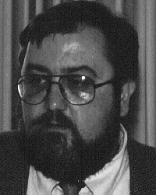
Left, President Phil Krein; right, Vice President for Operations Tom Habetler
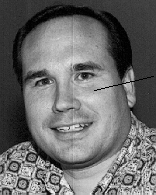
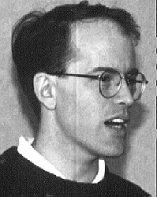
Left, Vice President for Meetings Kevin FellHoelter; right,
Treasurer Dick Bass
(note: Tragically, Dick
Bass was killed in an auto accident on April 13, 1999)
by F. Dong Tan, PELS-35 Chair
At our October 1998 meeting, the following officers were elected for the PELS Los Angeles Council Chapter: F. Dong Tan, Chair; Steve Freeland, Program Chair/Newsletter; Bob Gourlay, Secretary; Jerry Foutz, Treasurer; and Craig Elder, Membership/Publicity.
The PELS-35 has been holding its monthly meetings regularly ever since its founding in 1991. We have had a total of 50 meetings. This year was no exception. We have been continuing our tradition of holding monthly meetings regularly. Here is a list of the meetings.
- January 28, 1998: Mr. Bob Mammano, Unitrode Corporation, "Power Conversion Topologies: Moving Beyond Buck, Boost, and Flyback."
- February 25, 1998: Mr. Scott Smyser, Tektronix, Inc., on "Power Electronics Measurements."
- March 25, 1998: "Tools of the Trade" as used by Michael Knights of Jasper Electronics, Ralph Griffin of TRW Spacecraft Technology Division, Jerrold Foutz of SMPS Technology, Robert D. Gourlay of RDG Engineering, and Zhe Zhang of TESLACO.
- April 22, 1998: Dr. James F. Lazar, Braxton Engineering, "Intuitive PWM Switch Models."
- May 27, 1998: Dr. Kasemsan Siri, Aerospace Corporation, "Current-Sharing Approaches in Parallel-Connected DC-DC Converter Systems - Part I."
- September 23, 1998: Dr. Kasemsan Siri, Aerospace Corporation, "Current-Sharing Approaches in Parallel-Connected DC-DC Converter Systems Part II."
- October 28, 1998: Chuck Mullett, Condor DC Power Supplies, Inc., "Power Electronics: A Technology Perspective."
- December/November, 1998: Dave Lux, NASA Dryden Flight Research Facility, "Research & Development of the National Space Launch Industry and Its Commercialization, with Details on the Linear Aerospike SR-71 Experiment (LASRE)."
- January 27, 1999 Meeting - Bob Mammano, Unitrode Corporation, "The Great Divide: Closing the Loop on Isolated Power Converters."
- February 24, 1999 Meeting: Michael Knights, Transistor Devices, Inc., "The Controlled Transformer."
- March 24, 1999: John Millen, TRW, "Bulletproofing the SPICE Implementation of the Vorpérian Large-Signal Model," and Stephen Incledon, The Boeing Company, "A Large-Signal Model of a Buck-Derived Power Converter."
- Coming in May, 1999: Dr. R. D. Middlebrook on "N Extra Element Theorem: It's neat!"
Engineers Can Prepare for P.E. Exam with Two IEEE New Video Courses
by Christy Bouziotis, Outreach Communications Coordinator for IEEE Educational Activities
PISCATAWAY, NJ, - P.E. licensure opens doors to better career opportunities for engineers of all disciplines, and especially those interested in consulting. New from the IEEE is the P.E. Review, two video tutorials that will help engineers prepare for the Power Engineering portion of the Professional Engineering Licensing Examination.
In the first program, presenter Dr. Randy Collins, P.E., reviews the Transmission and Distribution section of the exam. In the second program, Collins focuses on the Machinery and Applications exam section. State licensing boards use examinations prepared by the National Council of Examiners for Engineering and Surveying (NCEES). Expanding on the sample problems put forth in the NCEES's Principles and Practice of Engineering (PE), these video tutorials cover the following topics:
- The format of the exam
- The knowledge that is tested on the exam
- Exam preparation strategies
- Solution and analysis techniques for use on the exam that apply to power engineering
- Electrical power system transmission and distribution engineering problem solving
- Symmetrical components and balanced system calculations
- Applications of electrical power engineering
- Balanced circuit analysis
- Per-unit analysis
- And much more!
These tutorials can be used for individual viewing or group sessions. Both the Individual version of the P.E. Review and the Industry version come with the tapes and presentation notes. Additionally, the Industry version includes five NCEES sample books, PC computer disk of the PowerPoint presentations, and an instructor's guide for tailoring the video for a training program. The latter version authorizes multiple users of the videos.
Since engineering licensure specifications vary from state to state, candidates should refer to their own state licensure board for requirements and regulations. To order this video course, use the following product numbers:
(Individual version)
For the P.E. Review: Transmission & Distribution use HV7026-QVE; Member price: $124; List price: $199. For the P.E. Review: Machinery and Applications use HV7028-QVE; Member price: $124; List price: $199.
(Industry version)
For the P.E. Review: Transmission & Distribution use HV7032-QVE; Member price: $799; List price: $799. For the P.E. Review: Machinery and Applications use HV7033-QVE; Member price: $799; List price: $799.
Order from the IEEE Customer Service, 445 Hoes Lane, PO Box 1331, Piscataway, NJ 08855-1331, USA. For single sales, call 1-800-678-IEEE (1-732-981-0060 outside the USA and Canada); for company or institutional sales, call 1-800-701-IEEE; or fax 732-981-9667. Shipping and handling charges apply.
Meetings of Interest to PELS Members
1999 IEEE Transmission and Distribution Conference and Exposition, sponsored by the Power Engineering Society, will be held April 11-16, 1999, at the Ernest N. Moriat Converntion Center, New Orleans, Louisiana, USA. For more information, visit http://www.99ieeet-d.org.
INTELEC® 99, the 21st International Telecommunications Energy Conference, is set for June 6-9, 1999 at the Falconer Center in Copenhagen, Denmark. See http://www.teledanmark.dk/intelec99/menu/start.htm for additional information.
PESC® '99, 30th Annual IEEE Power Electronics Specialists Conference, will be held June 27-July 1, 1999, at the Charleston Place Orient-Express Hotel, Charleston, South Carolina, USA. PESC '99 is sponsored by the IEEE Power Electronics Society. Visit the conference web site at http://www.pels.org/PESC99.html to download conference registration and hotel reservation forms.
ISIE '99, 1999 IEEE International Symposium on Industrial Electronics, will be held in Bled, Slovenia, 12-16 July 1999. The symposium is sponsored by the IEEE Industrial Electronics Society and the Slovenia Ministry of Science and Technology. Paper summary submissions were due by 1 December 1998. Visit web site http://www.ro.feri.uni-mb.si/ISIE99/ for additional information.
PEDS '99, Power Electronics and Drive systems, is scheduled for July 26-29 in Hong Kong. It is organized by the IEEE Hong Kong Section and the Joint Chapter of the IEEE Power Engineering, Industry Applications and Power Electronics Societies, in cooperation with the IEEE Singapore Section and the IEEE Power Electronics Society.
EPE '99, 8th European Conference on Power Electronics and Applications, sponsored by the European Power Electronics and Drives Association, is scheduled for September 7-9, 1999, in Lausanne, Switzerland.
COBEP `99, 5th Brazilian Power Electronics Conference will take place September 19-23, 1999, in Foz do Iguaçu, State of Paraná, southern Brazil. It is organized by the Brazilian Power Electronics Society (SOBRAEP) and by the Federal University of Paraná and Federal University of Santa Maria, Brazil. For more information, visit the conference web site at http://www.sobraep.ufsc.br/cobep99.
AFRICON '99, "Electrotechnical Services for Africa," sponsored by Region 8 of the IEEE, is scheduled for September 29 to October 1, 1999. Visit the conference web site at http://www.ieee-sa.sun.ac.za/africon.
APEC® ' 00, 15th Annual IEEE Applied Power Electronics Conference, sponsored by the IEEE Power Electronics and Industry Applications Societies and the Power Sources Manufacturers Association, is set for February 6-10 at The Fairmont Hotel, New Orleans, Louisiana, USA. Prospective authors should send eight copies of a double-spaced fifty-word abstract and a double-spaced three- to five-page digest to APEC 2000, 2000 L Street, NW, Suite 710, Washington, DC 20036, USA, by July 16, 1999. Other contacts for APEC '00: TEL:+1-202-973-8664, FAX: +1-202-331-0111, e-mail: apec@courtesyassoc.com, website: http://www.apec-conf.org.
IPEC-Tokyo, International Power Electronics Conference, will be held April 3-7, 2000 at Keio Plaza Hotel, Tokyo, Japan in cooperation with the IEEE Power Electronics Society. The deadline for prospective authors for five copies of an extended summariy is September 15, 1999. Send summaries to Secretariat of IPEC-Tokyo-2000, c/o International Communications Specialists, Inc., Sabo-Kaikan Annex, 2-7-4 Hirakawa-cho, Chiyoda, Tokyo 102-8646, Japan. For more information, visit the conference web site at http://www.iee.or.jp/ias/ipec/ or contact General Chair Professor Ohnishi, e-mail: ohnishi@sd.keio.ac.jp
PESC® '00, the 31st IEEE Power Electronics Specialists Conference, sponsored by the Power Electronics Society, will be held June 18-23, 2000, at the National University of Ireland, Galway, Ireland. See pages 8 and 9 of this newsletter for the Call for Papers. For advance information of this conference visit the conference web site at http://pesc00.nuigalway.ie/.
IPEMC '2000, 3rd International Power Electronics and Motion Control Conference, sponsored by the China Electrotechnical Society and the National Nature Science Foundation of China, in cooperation with the IEEE Power Electronics Society and the IEEE Beijing Section, is set for August 15-18, 2000, at Tsinghua University in Beijing China.